Agave plants are characterized by their thick, fleshy leaves that store water. The leaves of an Agave plant are also sharp, which helps the plant to protect itself from predators. Agaves are relatively easy to grow in warm, sunny areas with well-drained soil. They’re drought-tolerant and can even tolerate brief periods of frost. When choosing an Agave plant for your garden, select a variety appropriate for your space’s size.
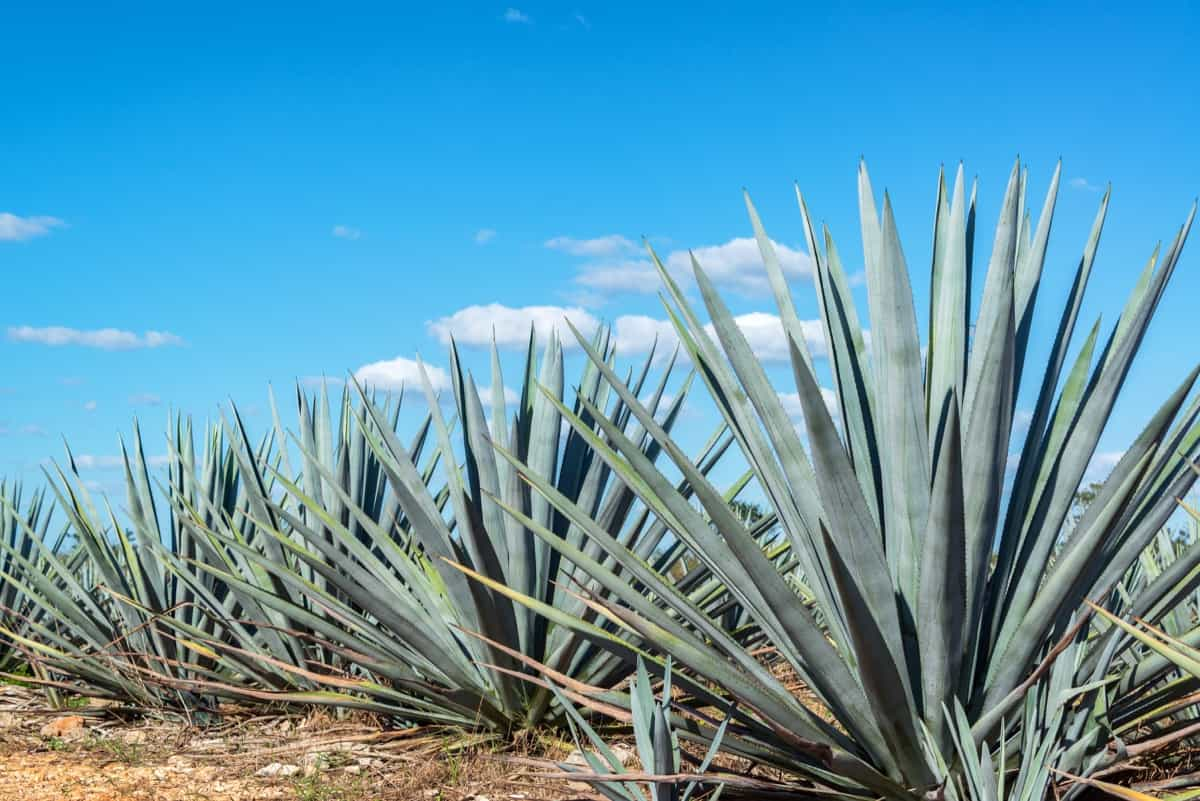
Some Agaves can grow quite large, so it’s important to choose one that will fit in the area you have available. Agaves are available in many colors and sizes and can be used as accent plants or groundcover. Agave plants are used for a variety of purposes. Some people use them as ornamental plants, while others use them for their medicinal properties. When grown in the garden, Agave requires very little care. They are slow growers, so be patient when planting them in your garden.
How to Grow and Care for Agave in Your Garden
Types of Agave Plants
Foxtail Agave – The foxtail Agave is a slow-growing plant that eventually forms a rosette of green leaves. The leaves are thick and fleshy, with sharp tips that can cause injury if not handled carefully. After blooming, the plant dies, but it will produce offsets that can be replanted to continue the cycle. Foxtail Agaves are commonly used as ornamental plants.
Caribbean Agave – The Caribbean Agave is a perennial plant that can grow 5 feet tall. The plant leaves are green and have a sharp point at the end. The flowers of the Caribbean Agave are yellow and grow in clusters.
Blue Agave – The blue Agave plant takes between 8 and 12 years to mature and can grow up to 5 meters tall. The large central stalk is topped with a spikey flower that blooms once in its lifetime (before the plant dies). Because it takes so long to mature, blue Agave is one of the more expensive types of Agave.
In case you missed it: How to Grow and Care for Forsythia in Your Garden: A Step-By-Step Guide for Beginners
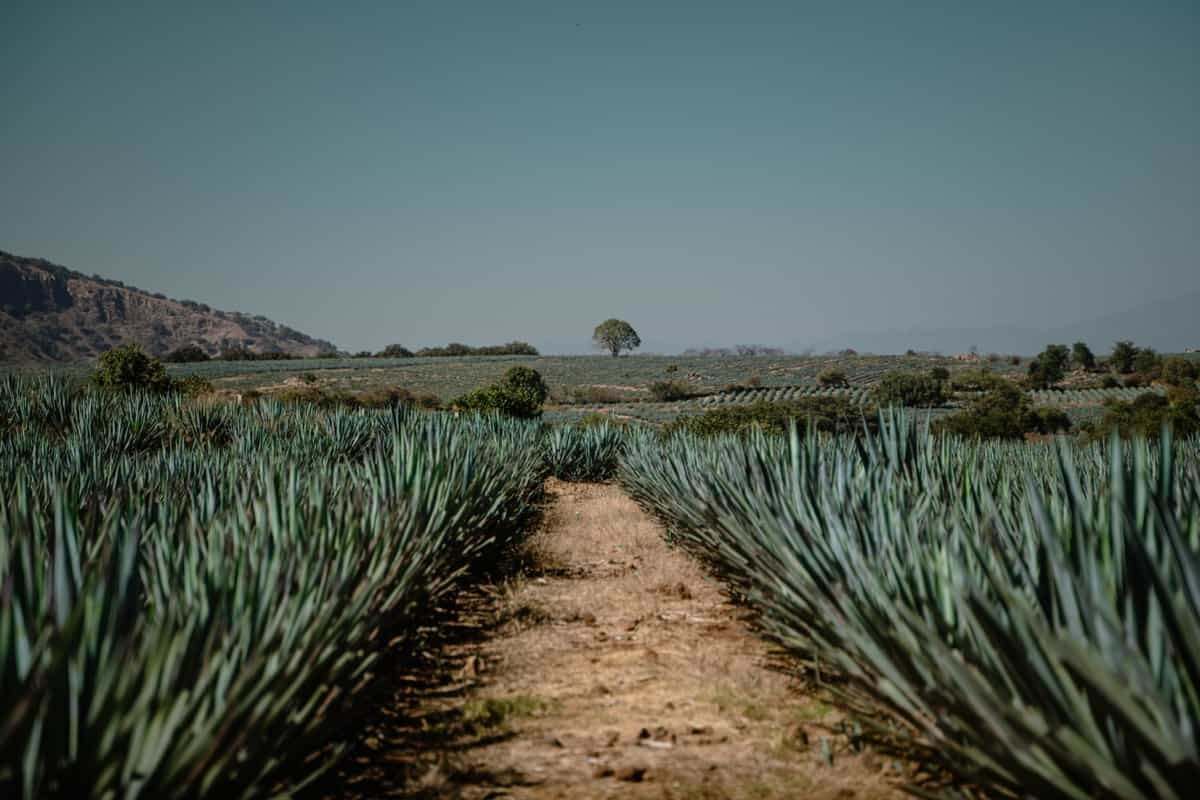
American Century Agave – American Century Agave plants are succulent, meaning they have thick, fleshy leaves that store water. These drought-tolerant plants are perfect for hot, dry climates. American Century Agave plants grow in rosettes, with pointed leaves that can be green, blue, or purple. Some species of American Century Agave can reach up to 6 feet tall. These beautiful plants make great additions to any landscape.
Whale’s Tongue Agave – The Whale’s Tongue Agave is a slow-growing succulent reaching 6 feet tall. It has a rosette shape with thick, blue-green leaves with white margins.
Octopus Agave – Of all the types of Agave plants, the octopus Agave is perhaps the most interesting. As its name suggests, this plant has long, thin tentacles that extend from its center. When it blooms, the octopus Agave produces a large yellow flower that is quite beautiful.
Thread-Leaf Agave – Thread-Leaf Agave is a perennial plant that forms rosettes of thick, leathery leaves. The leaves are green with white stripes and have sharp spines on the margins. The flowers are yellow and borne on a tall stalk. Thread-Leaf Agave is cultivated as an ornamental plant in gardens and containers.
Shaw’s Agave – There are many Agave plants, but one of the most popular is Shaw’s Agave. Shaw’s Agave is a relatively small plant, only growing to be about two feet tall. However, it can spread up to six feet wide, making it a great choice for filling empty spaces in your landscape. This plant is also drought-tolerant, so it’s a great option for those who live in dry climates.
Twin-Flowered Agave – The twin-flowered Agave gets its name from the two flowers that bloom on each stalk in springtime.
In case you missed it: How to Grow and Care for Agrimony in Your Herb Garden

Climate Suitable for Growing Agave in The Garden
Agave is a wonderful addition to any garden; it can thrive for years with proper care. Some Agaves can tolerate cold weather, while others do better in hot, dry climates. Once you’ve chosen the right plant, give it plenty of room to grow. Agaves can spread quickly and become large, so leave enough space when planting. Ensuring your Agave plants thrive by giving them plenty of sunlight and well-drained soil is important.
They are also drought-tolerant and can withstand high temperatures, making them ideal for planting in hot, dry climates. Agaves prefer full sun but will tolerate partial shade. They may appreciate a little afternoon shade in hot climates to prevent scorching. They are adaptable to a wide range of soils if the soil is well-drained. If you live in cold winters, it is best to plant your Agave in a pot to move it indoors when the temperature drops.
Soil Requirement for Growing Agave in The Garden
Agave plants are native to arid regions and thrive in sandy, well-drained soils. They are drought-tolerant and can even grow in poor, rocky soils. However, it is best to mix the soil with compost before planting for the best results. Agave plants do not like wet feet and rot if the roots are constantly wet.
In case you missed it: How to Grow and Care for Daffodils in Containers
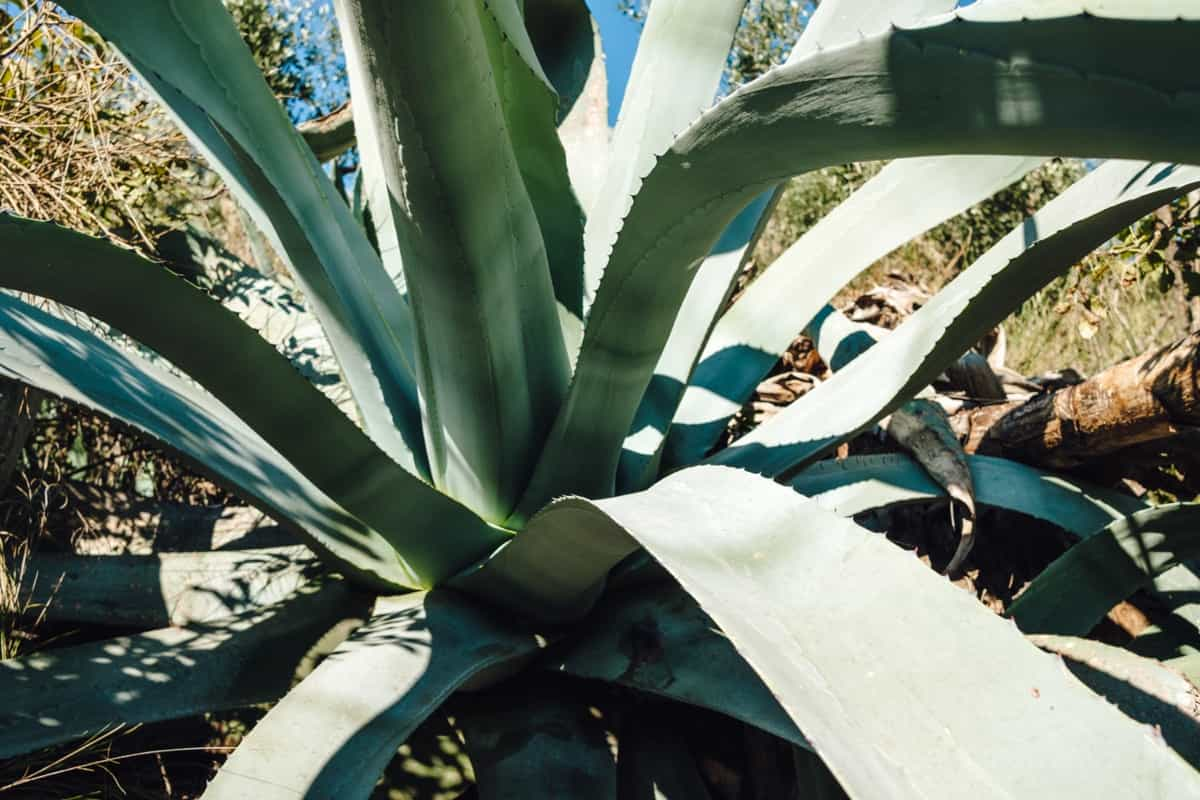
Therefore, they should be planted in an area that drains well. You should consider a few things when choosing the best soil for growing Agave in the garden. The soil should be well-draining, as Agave is susceptible to root rot. A sandy or gravelly soil is ideal. The pH should be on the alkaline side, around 7.5-8.5. And finally, the soil should be relatively low in organic matter, as too much can lead to fungal diseases.
Water Requirement for Growing Agave in The Garden
Proper watering is essential for keeping your Agave healthy. During the hottest months, water once a week or keep the soil moist but not soggy. In cooler weather, reduce watering to every other week. Agave is extremely drought tolerant and can thrive in conditions where other plants would quickly wilt and die.
However, they need water to get established, especially if you grow them in containers. Once established, Agave will need very little supplemental watering unless you live in an area with extended periods of drought. If you need to water your Agave, do so deeply and infrequently to encourage deep root growth.
Agave plants are native to hot, dry climates and require very little water. Too much water can be detrimental to their health. When growing Agave in the garden, it is important to plant them in a well-drained spot and only water them when the soil is completely dry. Allow the plant to go through a dry period every few weeks to prevent root rot.
In case you missed it: Best Ways to Prevent Pesky Slugs and Snails in Your Garden Plants

Propagating Agave
From Seed
To propagate Agave, you can grow them from seed or remove offsets from the parent plant. If growing from seed, start them indoors 6-8 weeks before your last frost date. Sow agave seeds on the surface of moistened potting mix and keep them at room temperature until they germinate. Once they have germinated, transplant them into pots filled with the well-drained cactus mix.
From Pups or Offsets
Agave is incredibly easy to propagate from pups or offsets. You can remove pups at any time of year, but for best results, do it in spring or summer. Allow the pup to dry for a day or two before replanting. You can remove offsets from the parent plant after maturity (3-5 years). You should carefully cut away the offset at its base, careful not to damage the main plant.
Allow the offset to callous over for a few days before replanting it in a well-drained cactus mix. Fill a pot with well-draining cactus mix and place the Agave pup on top. Gently firm the soil around the base of the plant and water thoroughly. Until the plant is established, keep the soil moist.
Agave Plant Care
Fertilizer Requirement for Growing Agave in The Garden
Agave is a drought-tolerant plant; however, it will produce more flowers if given occasional deep watering and fertilization. Use a low-nitrogen fertilizer formulated for cacti or succulents. You should apply the fertilizer in early spring. Follow the package directions for application rates. Agave plants are slow-growing and can live for many years. They generally do not need much fertilizer, but if you want to encourage faster growth, you can apply a low-nitrogen fertilizer once or twice a year.
Pruning Agave Plant
Pruning Agave plants is a necessary part of their care. Without regular pruning, these plants can become overgrown and unmanageable. Always use clean, sharp tools to avoid damaging the plant when pruning. To prune an Agave plant, remove any dead or dying leaves. Cut these leaves off at the base of the plant using a sharp knife or shears. Next, trim any long or stray leaves to tidy the plant. Finally, cut off any flower stalks that have emerged from the center of the plant. These flowers will drain the plant’s energy and should be removed to promote healthy growth.
In case you missed it: 18 Best Vegetables to Grow in Buckets: Planting to Care for Beginners
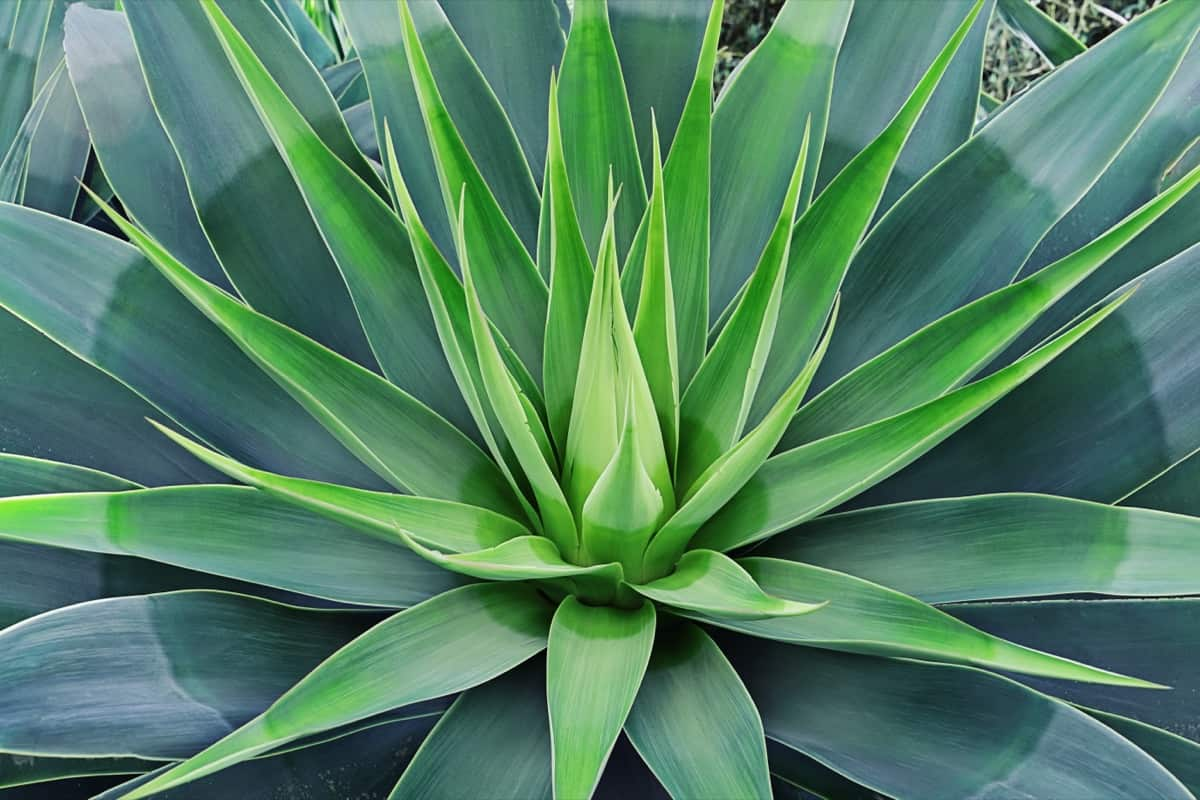
Agave Plant Care in Winter
If you live in a region with cold winters, you must take special care of your Agave plants during winter. Bring potted Agaves indoors or move them to a sheltered spot outdoors if possible. If you can’t do either, cover the plants with a frost blanket or tarp to protect them from the cold. Make sure the plants are well-watered before the first frost hits.
Agaves store water in their leaves, so they won’t need much watering once winter arrives. However, they will need extra water if it’s particularly dry where you live. Apply mulch around the base of each plant to help insulate it from the cold weather.
Pests and Diseases of Agave and Their Control
A few pests can cause problems for Agave plants, but fortunately, there are also some effective ways to control them. One of the most common pests is the Agave snout weevil, which feeds on the plant’s leaves and can eventually kill it. The best way to control this pest is to use an insecticide specifically labeled for use against Agave snout weevils. Another common pest is the mealybug, which sucks the sap out of the leaves and can cause them to turn yellow and wilt.
Mealybugs can be controlled with various insecticides, but one of the most effective methods is wiping them with a damp cloth. Finally, scale insects can also be a problem for Agaves. These pests attach themselves to the leaves and suck out the sap, causing yellowing and stunted growth. Scale insects can be controlled with insecticides, but it’s often best to remove them by hand.
Several diseases can affect Agave plants, and it is important to be aware of these to take steps to control them. One of the most common diseases is root rot, which various fungal pathogens can cause. This disease can lead to the death of the plant if left untreated. Symptoms include yellowing or wilting leaves and soft or mushy roots. If your plant has root rot, removing it from the soil and destroying it to prevent the spread of the disease is important.
Another common disease is powdery mildew, caused by a fungus forming white powdery growth on the plant leaves. This can cause the leaves to become yellow or brown and eventually die. You can control powdery mildew with fungicides, but applying them early in the growing season is important before the fungus can take hold. Other Agave plant diseases include stem rot, leaf spot, and crown rot.
These diseases are often caused by fungi or bacteria and can be difficult to control once they have taken hold. Prevention is always the best control method, so it is important to practice good hygiene when handling your plants and ensuring they are planted in well-draining soil. If you notice any symptoms of these diseases, removing affected plants from your garden immediately is important to prevent further spread.
In case you missed it: Top 13 Best Evergreen Front Door Plants: Add Beauty to Your Home Entrance
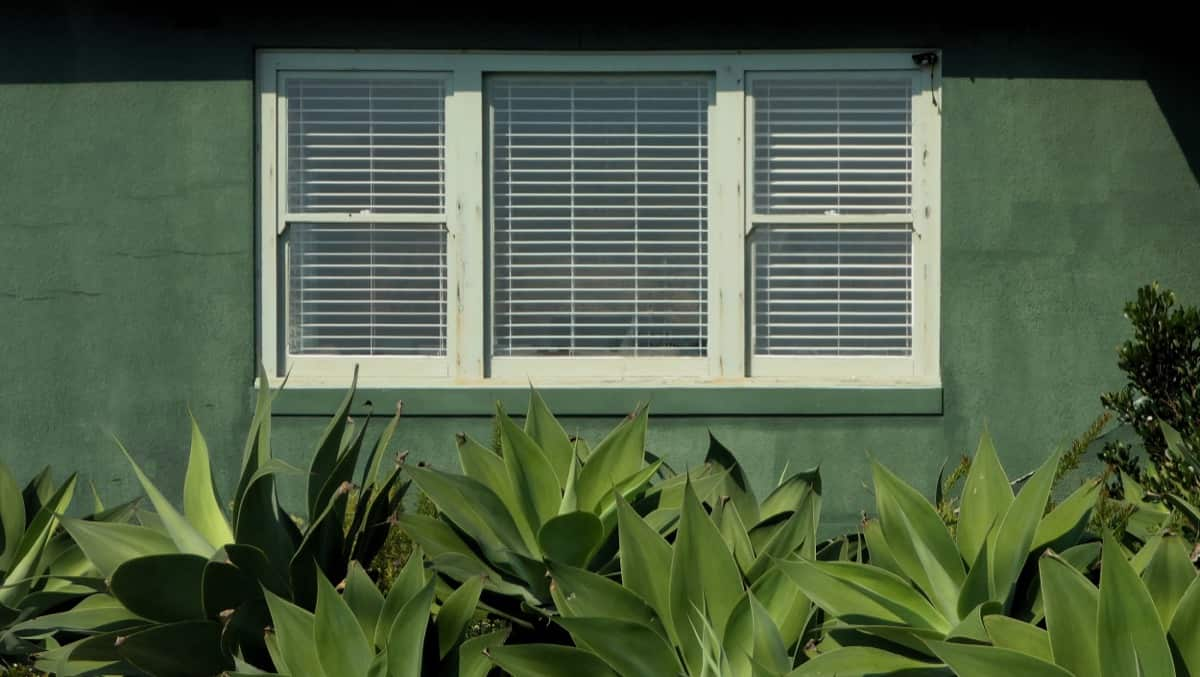
Conclusion
Some Agave plants bloom once in their lifetime and then die, while others may bloom multiple times over their long lifespans. Agave plants are an excellent choice for xeriscaping or drought-tolerant landscaping, as they require little to no supplemental watering once established. Many species of Agave also make good houseplants, as they are relatively low-maintenance and can tolerate some neglect. With so many different types, there is sure to be an Agave plant that is perfect for your needs.
- Gongura Seed Germination and Planting Methods
- Cabbage Seed Germination and Selection
- Broccoli Seed Germination and Selection
- Asparagus Seed Germination and Variety Selection
- Seasonal Flower Gardening: Best Practices for Spring, Summer, Fall, and Winter
- How to Grow Hibiscus from Flower
- Plantation Ideas for Home Decoration: A Beginners Guide
- Flower Garden Designs and Layouts for Beginners
- Planting and Spacing Techniques in Papaya: A Beginner’s Guide
- Growing Gold: Essential Techniques for Planting Pineapples
- How to Make Kalanchoe Plant Bushy: Home Remedies and Solutions
- 11 Reasons Why Your Gardenia is Not Blooming: Home Remedies and Solutions
- Eco Elegance: The Guide to Designing a Drought-Tolerant Landscape
- Gardening on a Slope: Strategies for Hillside Landscaping
- Nourish and Flourish: Top Organic Mulches for Thriving House Plants
- Everything You Want to Know about Indian Mogra Flower: Discover Uses and Growing
- Green Thumb Success: Expert Tips for Cultivating Greenhouse Pumpkins All Year Round
- Maximize Growth & Flavor: The Ultimate Guide to Companion Planting in Herb Gardens
- How to Control Rhododendron Problems Naturally: Home Remedies and Organic Ways to Fix Them
- Natural Magic: The Remarkable Benefits of Cinnamon for Plants
- Best Steps to Revive Dying Tulip with Natural and Organic Treatment
- 10 Reasons Why Your Angel Trumpet is Not Blooming: Remedies and Treatment
- How to Fix Periwinkle Leaf and Flower-Related Problems: Natural Remedies and Solutions
- How to Fix Zinnias Leaf and Flower Problems: Discover Natural and Home Remedies
- Organic Steps to Induce Lemon Tree Flowers: A Comprehensive Guide
- Bloom Booster: Crafting the Perfect Homemade Bougainvillea Fertilizer
- Optimizing Growth: A Guide to Applying NPK Fertilizer for Potted Plants
- 10 Best Homemade Fertilizers for Rubber Plant: DIY Recipes and Application Method
- How to Boost Female Pumpkin Flowers: Effective Steps for More Flowers and High Yields
- Transform Your Indoor Garden: Top Benefits of Pink Salt for Houseplants
- 10 Best Homemade Fertilizers for Peacock Plants (Calathea): Easy DIY Guide
- Unlock Blooms: 9 Reasons Why Your Potted Chrysanthemum is Not Blooming
- 8 Reasons Why Your Potted Hibiscus is Not Blooming: Fix it with Simple Solutions
- Unlock Blooms: 9 Key Reasons Your Potted Frangipani Won’t Flower
- 10 Reasons Why Is My Ice Plant Not Blooming: Remedies and Treatment
- 10 Reasons Why My Potted Hydrangea Not Blooming: Treatment and Remedies